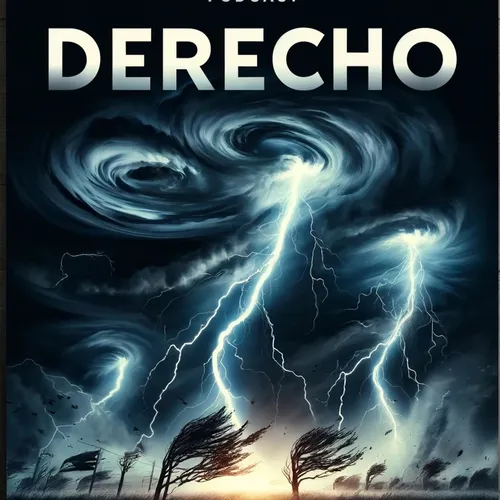Massive Derecho Wreaks Havoc Across Central US
- Author
- Inception Point Ai
- Published
- Tue 08 Jul 2025
- Episode Link
- https://www.spreaker.com/episode/massive-derecho-wreaks-havoc-across-central-us--66895387
Listeners, a rare and destructive weather event swept across the central United States earlier this week as a massive derecho tore through parts of South Dakota and Nebraska before continuing eastward. This derecho, which meteorologists confirmed late Tuesday, unleashed sustained straight-line winds and an extraordinary display of green-tinged skies over Sioux Falls, South Dakota—a phenomenon caused by the density of rain and hail in the storm's core refracting sunlight, a hallmark of particularly intense thunderstorm complexes, according to Good Morning America.
Wind speeds in the storm were extreme by any measure, with gusts reaching 96 miles per hour in Huron, South Dakota, and nearly 99 miles per hour in Howard, South Dakota. The storm system also brought hail up to the size of grapefruits to parts of northeast Nebraska, compounding the damage on the ground. Residents along the derecho's path reported widespread tree and structural damage, downed power lines, and scattered debris across hundreds of miles.
What makes a derecho notable isn't just its ferocity but its reach and longevity. To earn the "derecho" label, a windstorm must produce a swath of wind damage extending more than 250 miles, with continuous gusts at or above 58 miles per hour and multiple reports of gusts over 75 miles per hour. This storm met and exceeded all those criteria as it tracked from the Dakotas across the Midwest toward the Mid-Atlantic.
By Wednesday, the remnants of the system were still powerful enough to spawn a likely tornado in Goshen, Ohio, which leveled several buildings, while high winds were reported from Colorado all the way to Virginia. Emergency services responded to a high volume of calls for storm-related incidents, but there were no immediate reports of fatalities directly associated with the derecho itself. However, the widespread property and infrastructure damage is still being assessed, and power outages continued into Thursday for thousands.
Social media lit up with images of the surreal green sky over eastern South Dakota, a visual signal to observers of impending severe weather. Meteorologists explained that this color is a direct result of the unique light interactions within the storm—essentially nature's warning sign, now better understood thanks to improved radar and photographic analysis.
As these severe weather events become increasingly frequent and impactful, experts remind the public to stay alert to warnings, particularly from the National Weather Service, and to have plans in place for shelter and emergency supplies. The rapid movement and intensity of derechos mean that standard severe thunderstorm warnings might not provide adequate notice for everyone in the path, so familiarity with these rare but dangerous windstorms is essential for safety.
Thank you for tuning in to this week's storm update. Come back next week for more coverage of major weather events. This has been a Quiet Please production, and for more from me, check out Quiet Please Dot A I.
Some great Deals https://amzn.to/49SJ3Qs
For more check out http://www.quietplease.ai
This content was created in partnership and with the help of Artificial Intelligence AI
